
I’m giving a keynote at CompEd in India in December. My working title is “searching for computing’s soul”. I’m using the examples of ethics, sustainability and decolonising in the context of computing education. Very aware of being the white “expert” talking about these things in a colonised country with rich and varied understandings, I went looking for diagrams of sustainability from India. While my search is limited to English, I found very little. There is lots of fascinating text but almost nothing diagrammatic about sustainability. I thought I was there with Vaastu architecture, or Pancha Bhoota (see below), or stories of Lakshmi but no. Similarly, there are great diagrams of Yugas (time cycles), but nothing explicitly sustainable. Any leads much appreciated.
So, on with the show.
702. Yesterday and today (Hedstrom 2017)

703. Between society and nature (Griessler 2005)

704. Just Acting (All the world’s a stage…?) (van der Jagt 2021)

705. Five elements of the Vastu Shastra
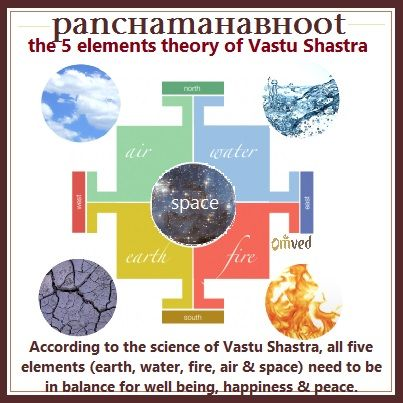
706. On hearing all of them, the banyan tree said, “No life is possible without any one of you. So, none of you is superior to the other”. (Brainkart)

707. Chinese 5 elements (Donr484 Wiki Commons)

708. Alternative levers (Duflot 2021)

709. Cube of pillars (Szetey 2021)
Axes representing the conceptual space in which the pathways sit. Each axis represents one of the dimensions of the Sustainable Development Goals (people, planet, and prosperity). One pathway sits at each outer vertex of a hypothetical cube on these axes, and there is a pathway at the approximate centre point of the cube representing Business As Usual (BAU). The vertices are color-coded to represent the dimensions which are prioritized for that pathway: yellow–prosperity; green–planet; and blue–people. LSP 5 and BAU are not color-coded as no dimensions are prioritized in these scenarios

710. Competencies (Wiek and Redman 2011, via Brudiers 2021)

711. It’s all agile really (López-Alcarria 2019)

712. Positive psychology (Corral-Verdugo 2012)

713. Daly Hourglass (Baue 2017 – also describes the process of model development from Daly)

714. True earnings (KPMG) (see also Cooper and Senkl’s 2016 feminist review)

715. Science versus context (McElroy 2015)
Context-based metrics, as indicated, always bring allocations to the table and are otherwise science- and/or ethics-based. Only context-based measures, therefore, make it possible to set goals for, and assess performance against, organization-specific sustainability standards of performance. Neither science- nor ethics-based measures by themselves can do this. Norms, values and ethics are always required to finish the job.
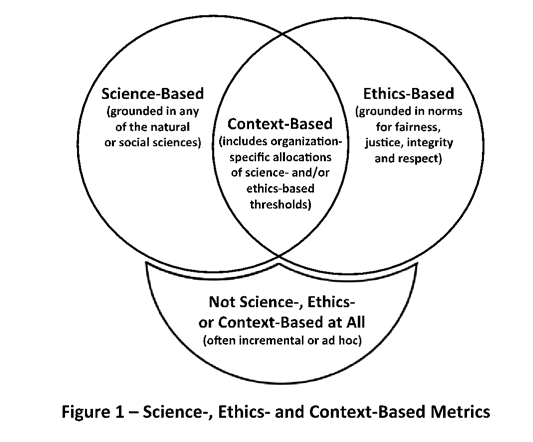
716. Economy for Common Good (ECG)

717. Data to Action hourglass model (Monson 2022)

718. Load of BS (Lüdeke-Freund 2016)

719. Triple-layered business model canvas (Joyce and Paquin 2016)
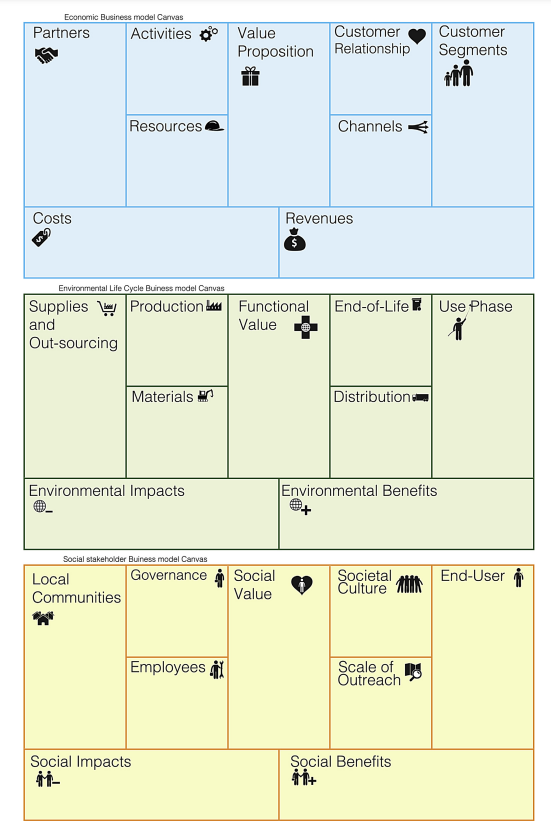
720. The Ruruku Strategic Canvas (Pirini 2023)

721. Disappointingly, it doesn’t fold into a box (Bocken 2014)
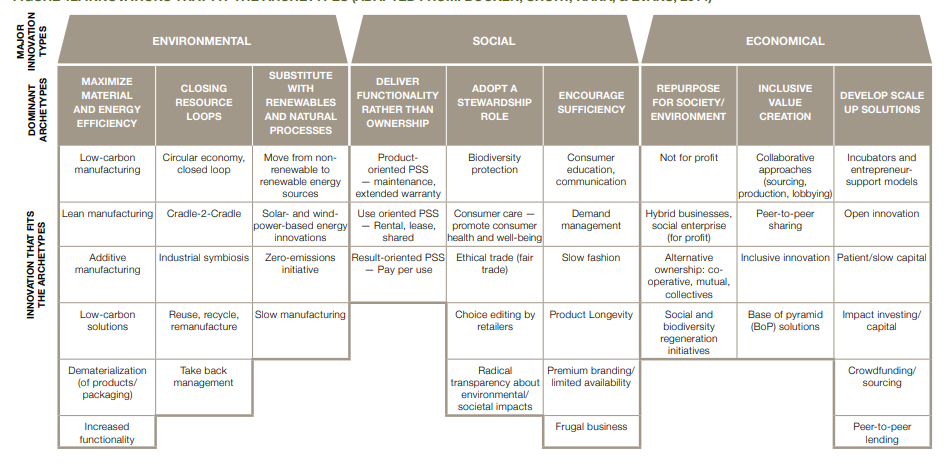
723. Interspecies (Bergmann 2019)

724. Hamburgers (EPOSEA model applied to the story of hamburgers) (Uhrqvist 2021)

725. Hexaflexagon (Sarah McManus)
I decided this would be a great concept to represent in hexaflexagon form! The first face is meant to suggest an organism, which is contained by an ecosystem, which is contained by its environment. The environment represents both large-scale processes (ex: biogeochemical cycles) that surround ecosystems, as well as the small-scale processes (ex: chemical reactions) that exist within organisms, so environment is again enfolded by the organism as you fold the hexaflexagon again. I’m trying to suggest ideas like variation and constraint, energy flow, and a hint of ascendancy/entropy.
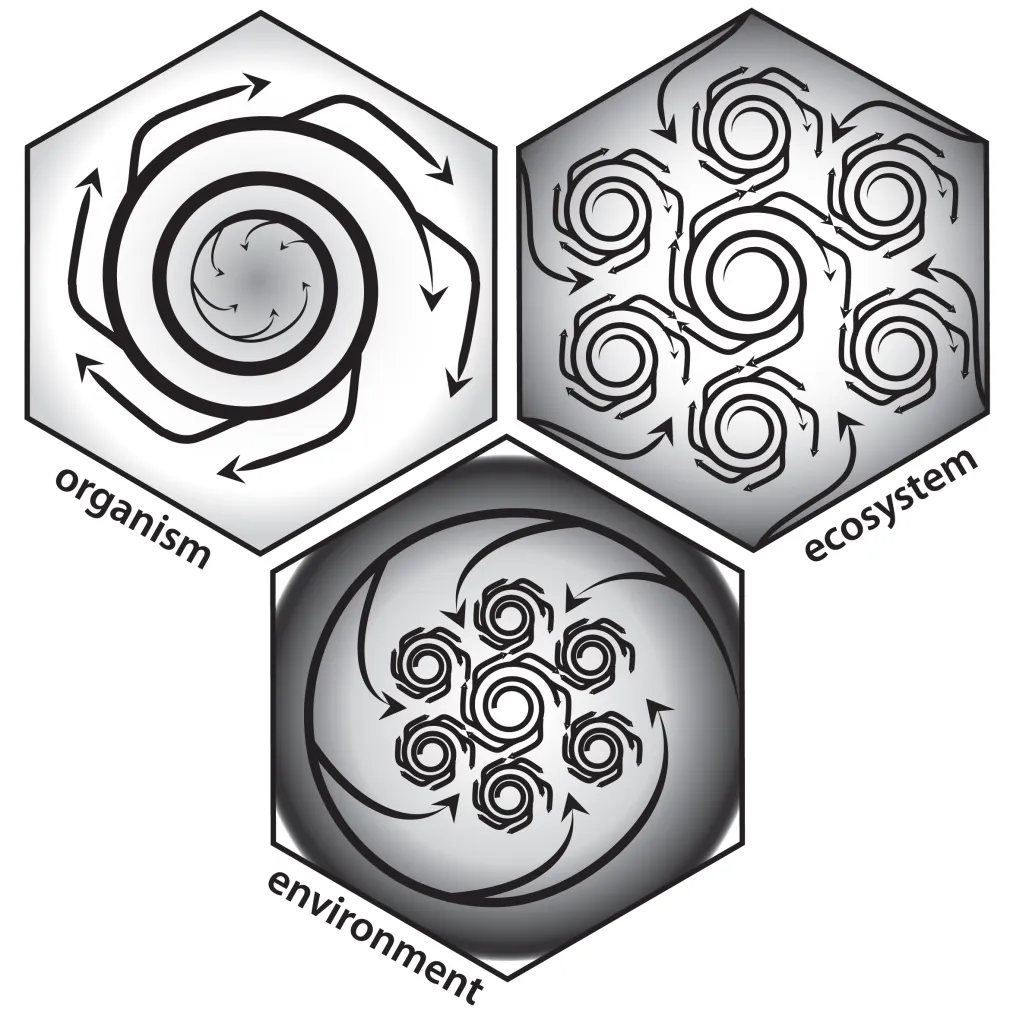
726. life = {environment{ecosystems{organisms{environment}}}} (Fiscus et al. 2012)

727. Window of Vitality (Fath et al. 2019)

728. Topological landscape of Sustainable Management (Heitzig et al. 2016) (see also Donges 2017 below).
Heitzig et al. (2016) show how a classification of qualitatively different regions in system state space
emerges from the following three ingredients: 1. environmental dynamics under a default strategy, 2. available management options the agent can choose from, and 3. the division of state space
into desirable (“sunny”) and undesirable (“dark”) regions. Hence, it uses an agent-environment interface perspective (second level of resilience complexity) with a default strategy and fixed state
desirability (figure 2). The various elements of this picture metaphorically illustrate the underlying mathematical Topology of Sustainable Management Framework with the waterstream correspond –
ing to the stability landscape under the default policy.
For example, the shelter is the sunny set of states in which the agent can remain forever without any management. Both in the glade and the lake it is possible to reach the shelter but the agent has to apply management. From the lake it has to cross through the dark region, whereas from the glade it can reach the shelter without leaving the sunny region. In other regions, such as the backwaters, the shelter cannot be reached, but the agent can remain in the sunny region by constant or repeated management.
These regions emerge from the allowed rule changes describing how the agent is able to adapt to and manage the environment.
(So this isn’t a landscape of sustainability per se, but of the difficulty of traversing between different states of sustainability)

729. Multiple cups and balls give multiple undesirable regions (Donges 2017)

730. Pattern–process–service–sustainability framework (Bojie Fu 2022)
A flowchart of the pattern, process, service, and sustainability framework in the coupled human and natural system (a) and a diagram of typical patterns, processes (e.g. hydrological processes), and ESs (e.g. provision services) (b).

731. Emotional profiles (Cremades and Stella 2022)
Speakers’ mindset reconstruction around “climate” (a, b) and “change” (c, d) in the speeches of Greta Thunberg (a, c) and Christopher Monckton (b, d).

732. Model of alternative hedonism (Naughton 2009)

733. Model of cognitive polyphasia (Naughton 2009)
the ability to hold simultaneously two completely conflicting views
Starting positions are at A in two different conversations – one about the “necessity of economic growth for social stability”, the other about “ecological and social goals”. There is not A1 and A2 as these positions can be maintained simultaneously and the text makes no inference as to which has or
should have priority. The positions are in different spaces but within the same current context.
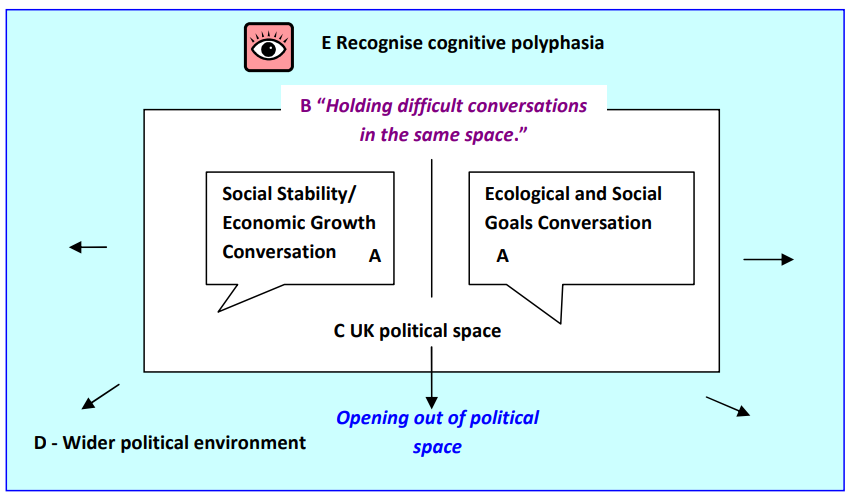
734. Closing metaphorical loops (Raymond 2013)

735. Multiple lenses for transdisciplinary (Vanasupa 2014)

736. Fractal agency (O’Brien et al 2023 after Sharma’s Three Spheres of Transformation)

737. Fractal Powers of 10 (O’Brien et al 2023 after Bhowmik et al.2020)

738. Reparation Ecology (Lampis et al. 2022)

739. Arrow in a circle (Fien 2002)

740. Typology (Pascual et al. 2023)

741. Diverse values of nature underpin different pathways toward sustainability (Pascual et al. 2023)

742. Values-centred leverage points (Pascual et al. 2023)

743. Regenerative economics (Fath et al. 2019)

744. Transformation (Kudo and Mino 2020)

745. Colon (Martin-Ortega et al. 2022)

746. Four plausible futures (Arup 2019)

747. ^That Graph^ (Unintentionally) Reveals What’s Wrong With Our Worldview. (Halsted 2020)
“… the graph makes a fundamental error in separating our social and environmental conditions, when the two are, in fact, inextricably intertwined. Our dominant cultural paradigm, however, assumes that human society and nature are somehow separate. This mental separation of culture from nature is used to justify the domination of humans over other species and the life-supporting Earth systems we call Gaia, as well as men’s domination over women, the domination of certain (usually fair skinned) ethnic groups over other (usually darker skinned) ethnic groups, and even the domination of our thinking selves over our feeling selves. The result is environmental degradation, patriarchy, racism, and psychological alienation.
Here’s what the graph should look like:
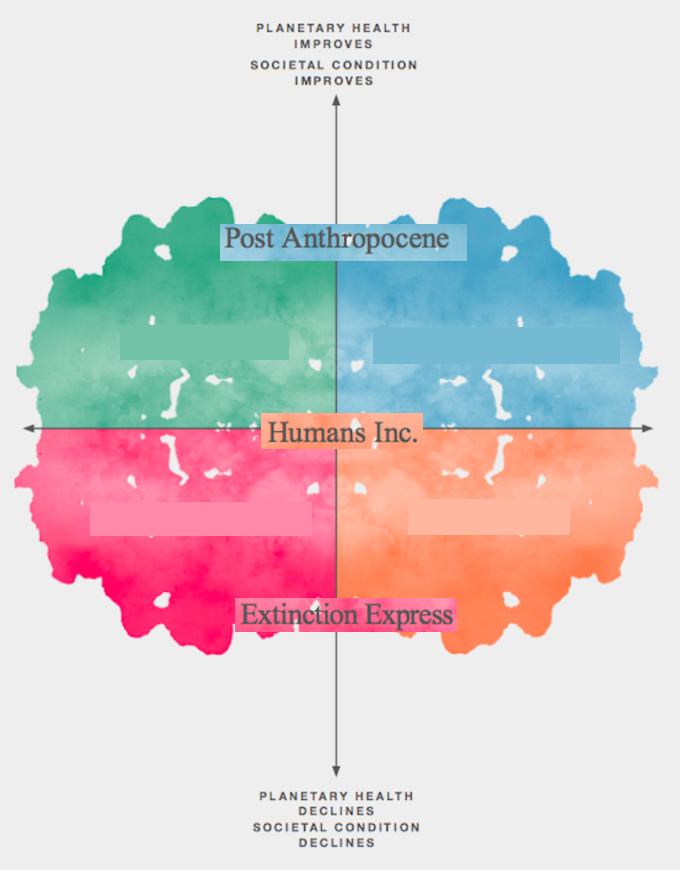
748. Human body, earth, and qi, united as the part of nature and the universe (Harjanto 2018)

749. Metamorphsis (Hutchins 2023)
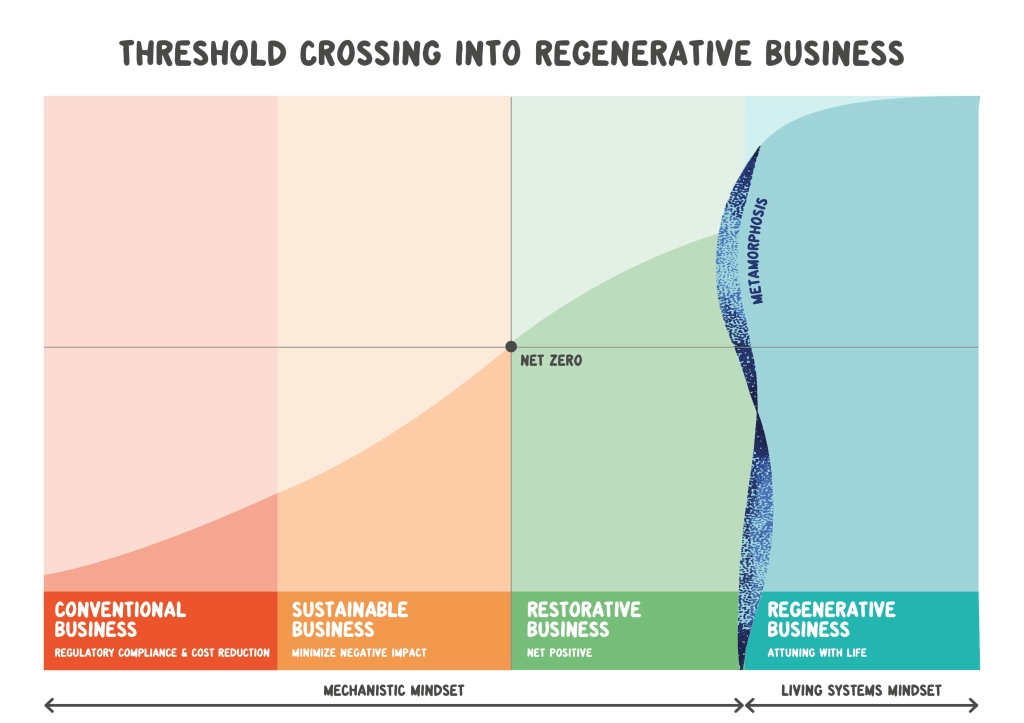

750. Self as participating within the world (Hutchins 2023)

751. A hero, a genie and a woodpecker walked into a bar… (Chambers et al. 2021)

The hatching is from here:

752. Critical processes to foster co-productive agility (Chambers et al. 2021)

753. Reconciling wellbeing and resilience (Chaigneau et al. 2022)
The narrow pursuit of resilience (1a) and wellbeing (1b) does not always lead to synergistic outcomes. An adaptive process of learning through doing is required to reconcile wellbeing and resilience for sustainable development (1c).

754. Once-in-a-civilisation metamorphic moment (Hutchins 2023)

755. Infinity of Connection (Richardson 2023)

756. Pillars as systems then emergent sustainable development (Reyers and Selig 2020)

757. Collaborations around urban nature (Koefoed 2019)
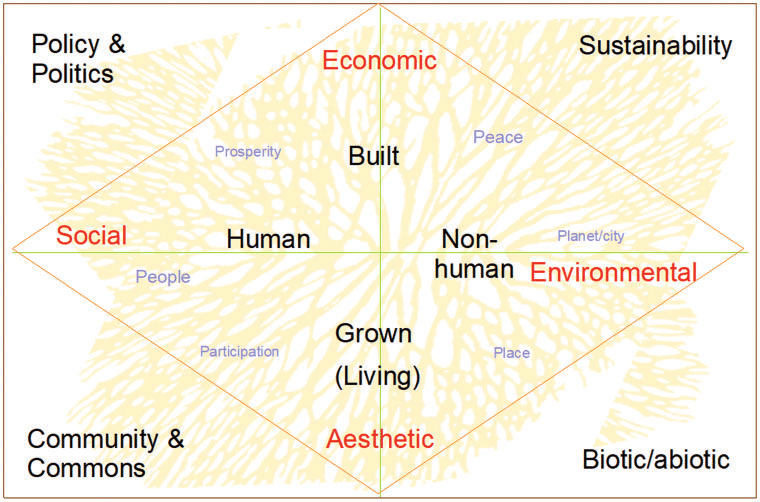
(Suggestions for altered order, with re-iterative feedback loops)
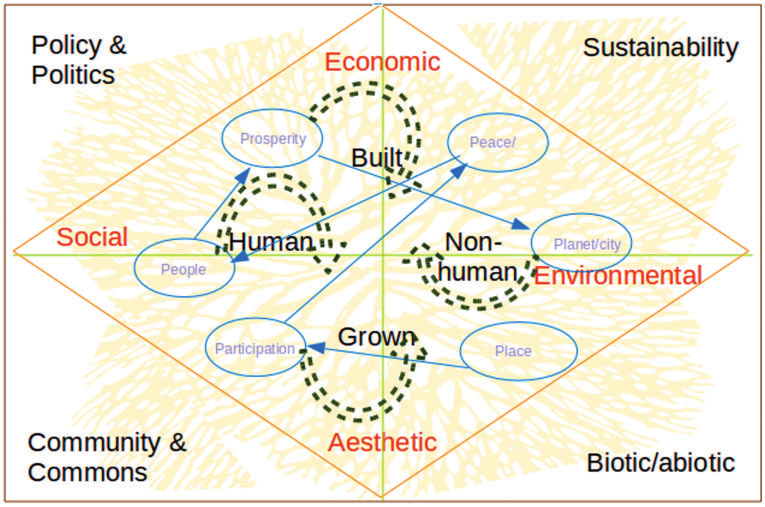
758. Sustainability requires knowledge as a web (Liu et al. 2019)

759. Regenerative leadership DNA (Hutchins 2023)

760. Coupled systems (Portner et al. 2023)

761. Transformative (Portner et al. 2023)
Biodiversity-climate interactions in social-ecological systems with an explicit depiction of resilience outcomes for alternative pathways.
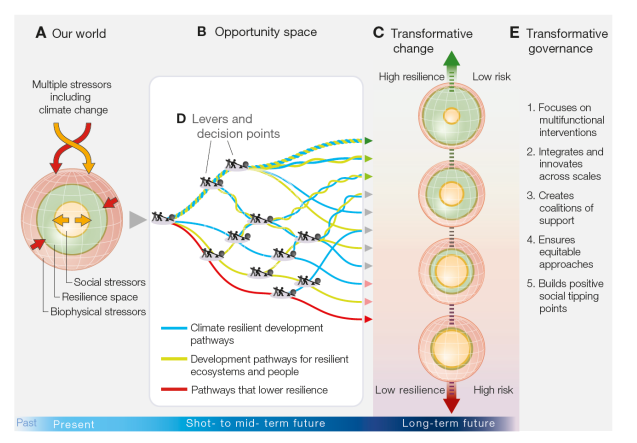
762. Sustainability is about shared spaces (Portner et al. 2023)

763. Womb of Life (Zabaniotu et al. 2020)

764. Transdisciplinary Trees (Zabaniotu et al. 2020)

765. Interconnectedness of the determinants of planetary health (Redvers et al. 2022)

766. Collective foresight (Wood et al. 2021)
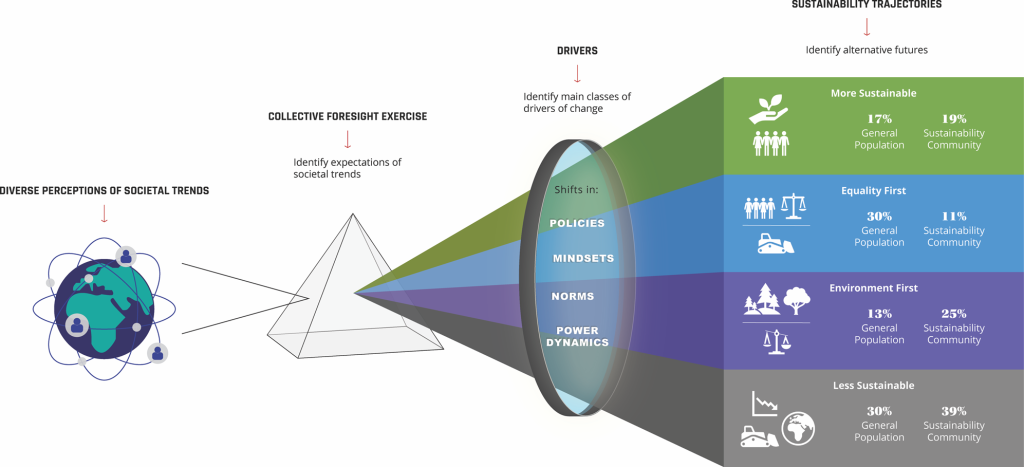
767. The being and doing of sustainability researcher identity (Hakkarainen et al. 2023)

768. Different pathways as a result of differences in history, context, and values. (Bennet et al. 2021)

769. Sustainable scaling mechanisms (Bennet et al. 2021)

770. Social memories and human niche (Douglass and Rasolondrainy 2020)

771. Relational turn (West et al. 2020) (see also Raymond et al. 2021 response, and West’s 2021 response to that)

from West 2021: Two possible research pathways for putting relational thinking to work in sustainability science

772. More integral – adding to Wilber (Lavaf-Pour and Meraz 2023)

773. Vulnerability in Complex Adaptive Systems (Naylor et al. 2020)

774. Network compass (Schneider et al. 2021)
The Network Compass’: four generic fields of action, each with five subfields, through which networks seek to foster co-production of knowledge for sustainability transformations


775. Adaptive cycle applied to creative destruction for sustainability transformation (Wassénius et al. 2023)

786. I’m here for the atom in the middle (Feagan et al. 2023)
Urban Resilience to Extremes, Sustainability Research Network

777. Undisciplinary journey (Haider et al. 2017)
Artistic rendition of the sustainability science PhD student (right) attempting to explain her ‘background’ to the more disciplinary ‘Nanotech science’ PhD student (left) who questioned her professional identity.

778. Undisciplinary compass (Haider et al. 2017)

779. Vivo way (Vivobarefoot)

780. Triple-S, caring for Science, Society and Self. (Sellberg et al. 2021)

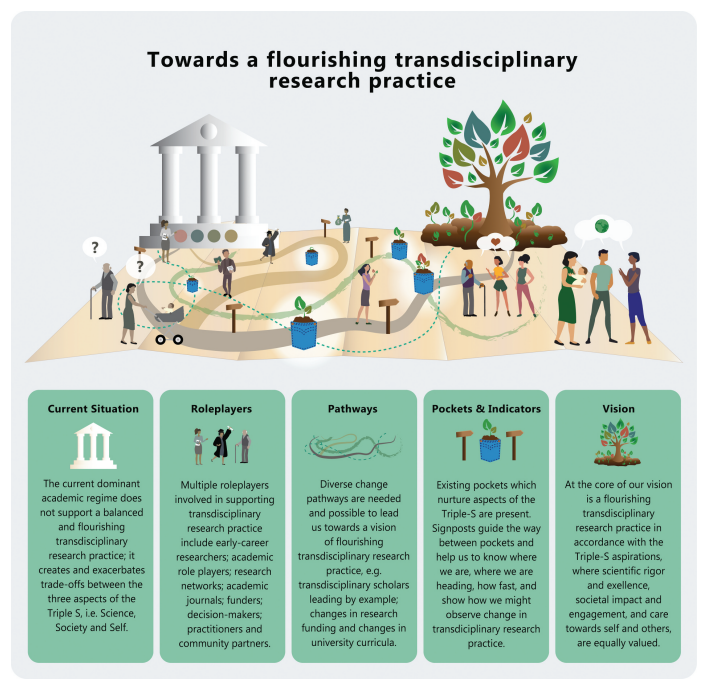
781. Multiple lines of evidence (Tengö et al 2021)

782. Leadership collective for sustainable transformations (Care et al. 2021)

783. Safe and just operating space for identity (Oliver et al. 2022)
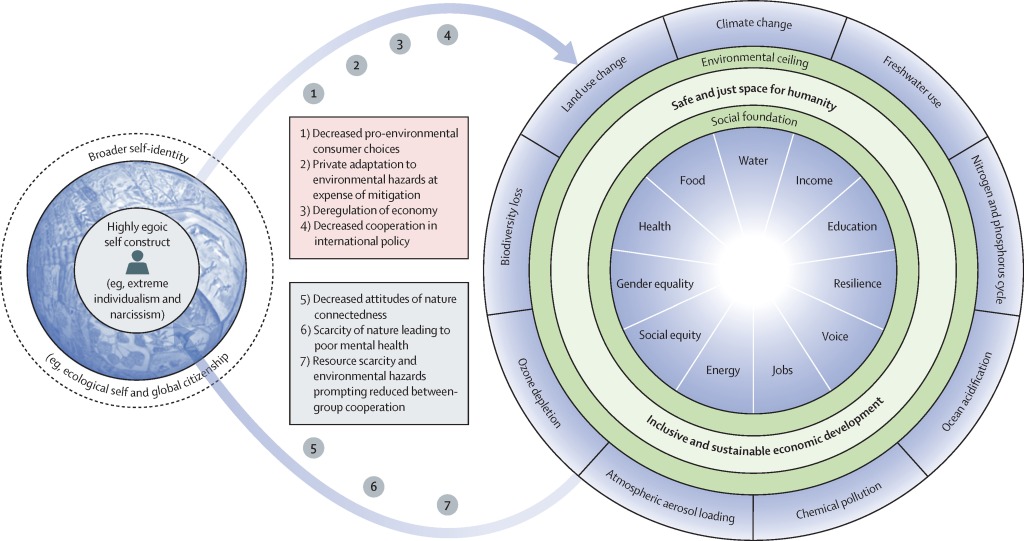
784. IMAGINE inner transformation and inner–outer change (Ives et al. 2023)

785. The regenerative eyes have it (Buckton et al. 2023)

786. Grand feedback loop (Masterson et al. 2019)
Integrative conceptual model illustrating the dynamic interrelation between ecosystems (1), their benefits to people (2), well-being (3), and people’s values and actions (4–5) that affect the condition of ecosystems.


787. Andean cross Chakana (van Norren 2020)
Balancing the inner, current and upper world, corresponding with emphatic care (heart), work (hands) and wisdom (head) (integrality); departing from families within communities and regions, which pray to (and respect) nature, sun and moon, and Great Spirit (relationality), while balancing the masculine and feminine in all life forms as complementary and living in reciprocity.

788. Relationship between human and nature (Taghvaee & Ma 2017)

789. Nature Futures Framework (Pereira et al. 2020)

790. Visions on dimensions (Pereira et al. 2020) (from Lundquist et al. 2017)

Bonus diagram I really like (but I couldn’t call about sustainable even though really wanted to). (Sterling et al. 2019)

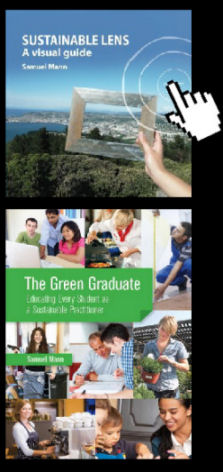
Posted on September 1, 2023
0